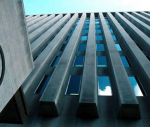You are here
The Italian economy's moment of truth
Jun 15,2023 - Last updated at Jun 15,2023
MILAN — Despite challenging global conditions, Italy’s economy has been faring relatively well. After slowing in the last quarter of 2022, GDP growth picked up in the first quarter of this year to reach an annualised rate of 1.9 per cent. Yet even if growth were to accelerate slightly, we still are unlikely to see a repeat of last year’s overall performance, when the economy expanded by 3.7 per cent, one of the highest growth rates of the last 40 years.
Last year’s growth was largely the result of robust domestic demand, especially private consumption and investment in residential properties, which benefitted from tax credits that were introduced before the pandemic to make Italy’s aging residential stock more energy efficient. At the same time, fiscal measures helped households and businesses preserve their purchasing power in the face of higher food and energy prices following Russia’s invasion of Ukraine.
But expansionary fiscal policy widened the budget deficit to a whopping 8 per cent of GDP, even as strong growth brought the government’s debt-to-GDP ratio down to 144 per cent — an 11-point drop from its 2020 peak. Now that many of the fiscal measures have been phased out, the projected deficit has fallen to 4.5 per cent of GDP.
The problem is that growth, too, will be lower this year. Worse, the European Central Bank’s interest-rate hikes have increased borrowing costs, dampening private investment and boosting debt-service costs. As a result, this year’s GDP growth rate should end up around 1.1-1.2 per cent, before slowing further in 2024. This would be a reversion to the mean. Since 1983, Italy’s economy has grown at an average annual rate of 1.1 per cent, compared to 2.4 per cent across the EU economy and 2.2 per cent across the G-7.
This outlook does not bode well for Prime Minister Giorgia Meloni, who campaigned last year on a promise to “lift up” the Italian economy. She needs strong growth to carry out her economic programme, especially her vow to extend the flat tax to high-income self-employed people. But she also must achieve a primary budget surplus. With interest rates rising, there is a greater risk of investors losing confidence in Italy’s ability to service its debt. Meloni therefore must keep the spread between ten-year Italian and German bonds as low as possible, ideally in the range of 100-150 basis points. It is currently at around 165 basis points.
To achieve sustained higher growth, Meloni’s government must address longstanding structural problems such as regional development divergences, demographic aging, women’s low labor-market participation rate, dismal productivity growth, stagnant incomes, tax evasion, and new climate-driven risks. These problems are not new to Italy. During his first electoral campaign in 1994, former Prime Minister Silvio Berlusconi, who died on June 12, promised to revive the economy and create one million new jobs — this did not happen. Sound economic policies were never a trademark of Berlusconi’s three governments.
Fortunately for Meloni, in responding to these challenges, Italy should have an additional 191.5 billion euros ($205 billion) from the European Union’s 800 billion euros pandemic recovery fund. Under its National Recovery and Resilience Plan (NRRP), Italy is committing funds to overcome many structural drags on productivity, with an emphasis on digitalisation and innovation, the clean-energy transition, and social inclusion.
The NRRP certainly has the potential to shift the Italian economy into a higher gear. With an eye toward reducing regional, generational, and gender gaps, it allocates 82 billion euros to Italy’s southern regions, with investments in 500 projects — from deploying electric buses to building high-speed rail links. Some 72 of these projects are targeted at small localities and will be managed by local authorities.
But will these projects be completed in time and on budget? Italy’s independent Court of Auditors recently warned that the NRRP is already falling behind the agreed schedule. In fact, the NRRP’s ambition is being undercut by structural incapacities that go back many years. All funds need to be spent by 2026, but the country simply does not have the capacity to implement so many infrastructure projects in such a short window. The problem is especially pronounced at the local level, owing to a combination of scarce skills and past cuts to public-sector staff.
But if the NRRP targets are not met, the allocated funds will not be fully disbursed, and overall investments thus will be curtailed. Although the European Commission approved Italy’s second tranche (21 billion euros) last September, the government’s request for the third tranche (19 billion euros) has been pending since January.
The stakes are high. Italy has a once-in-a-generation opportunity to modernise itself. The best way forward is perhaps to weigh some individual outlays against the NRRP’s overall objective. While localised projects will naturally respond more to local concerns, they will not necessarily align with the broader goal of boosting productivity.
Streamlining the NRRP and getting the green light from the EU calls for more collaboration between the government and the opposition. Italy still has a chance to transform its economy and achieve sustained higher growth. But whether doing so is politically feasible remains to be seen.
Paola Subacchi is professor of International Economics at the University of London’s Queen Mary Global Policy Institute. Copyright: Project Syndicate, 2023. www.project-syndicate.org













